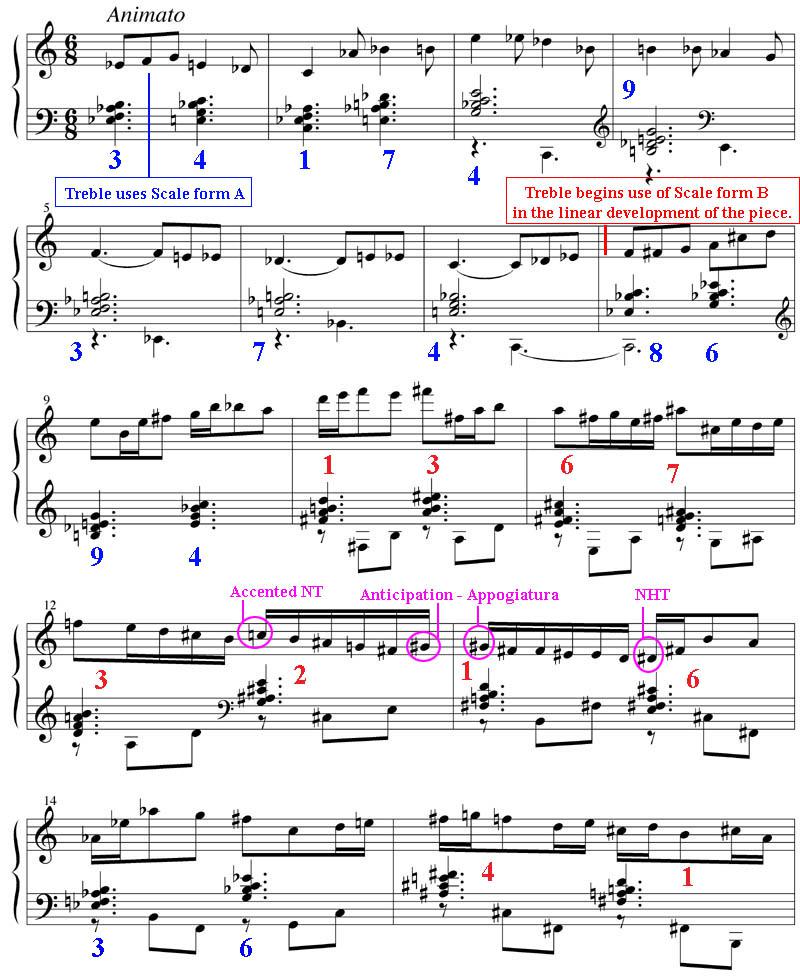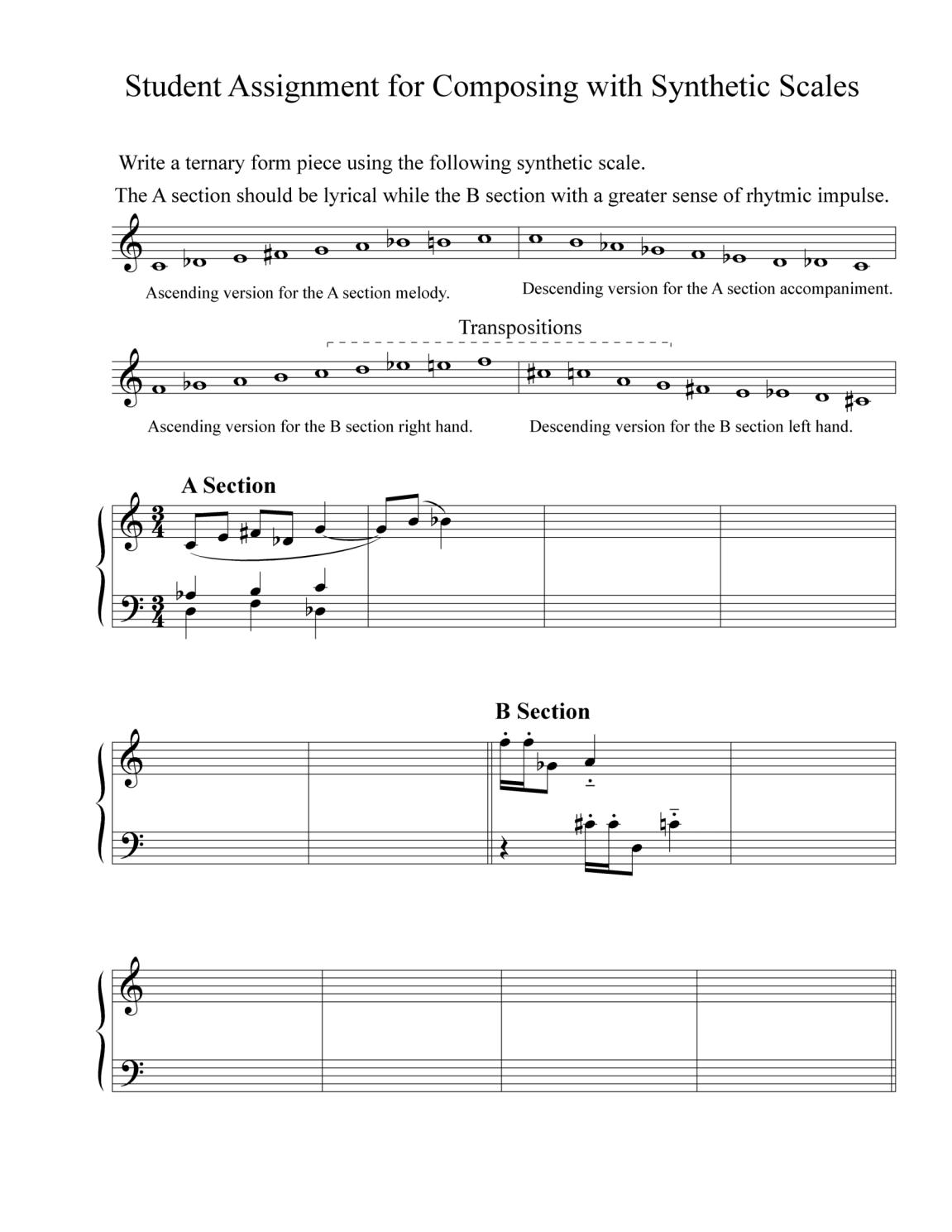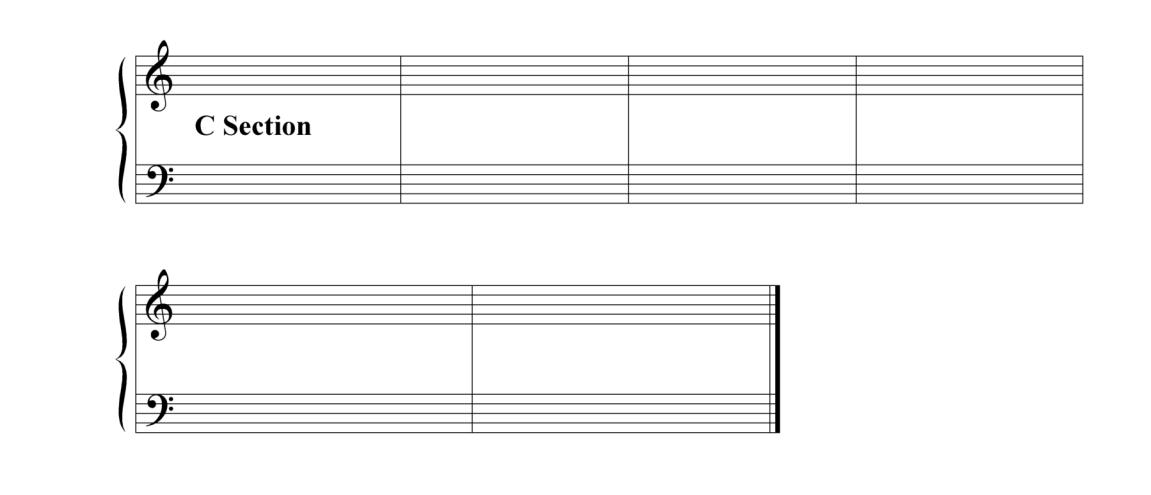11 Synthetic Scales
Synthetic Scales
At the dawn of the 20th century European composers were searching for new materials and techniques as many believed that the ideas that the Common Practice had offered were exhausted. While some developed entire new paradigms, others sought new approaches based on folk idioms. What these latter composers discovered, amongst other inspirational ideas in this too-often overlooked culture and literature, were novel scales that did not fit the art-music concepts as taught in the conservatories. This in turn spawned the concept of synthetic scales – the notion that the composer could create a newly invented scale for every composition, each replete with its own individual properties.
We will investigate the processes involved using these scales based on various theories and practices. Many composers who choose to use synthetic scales often employ standard forms in which to explore their potential. Also, the degree to which synthetic scales are articulated as quasi-tonal or non-tonal musical materials also varies. As such, we will compose two contrasting pieces, the first being of a lyrical quality using a non-tonal interpretation, the other rhythmic and in a more distinctly quasi-tonal realm. However, both will be cast in the traditional ternary form.
Index
A. Lyrical Ternary Piece using a Synthetic Scale
Developing a Scale. One method for creating a new scale that repeats each octave is to map out a succession of intervals that can be used in either an ascending or descending mode. Although a composer can of course choose one form over the other, the possibilities open up exponentially through a combination of their usage. In our piece, we will use a seven note scale, in two forms, based on the interval succession of a minor 3rd, minor 2nd, major 2nd, minor 2nd, minor 3rd, and major 2nd.
Transpositions. Just as in tonal composition, we can transpose the scale to each step in the chromatic field. This allows the composer to adopt Common Practice Era concepts such as modulation into the new piece, or simply act as a pool of scalar material from which to draw melodic and harmonic ideas from. In our ternary composition, we have chosen the latter, but have limited ourselves to using both forms of two transpositions, a tritone apart. We have labeled each form with a letter so the student can follow how we have written the piece shown in the analysis below.


Writing the Piece. The Common Practice ternary form has tonal constraints that are relaxed to a significant degree here. Instead of key regions, the character each section here is defined by the location of the melody. Our first section is distinguished by a treble melody accompanied by two voices in the bass, while the second section is contrasted by reversing this format. Cadences are further distinguished by allowing for a more homogeneous texture with a denser chordal basis.
Regarding harmony, similar to how in the tonal realm we can choose from a tertian or quartal vocabulary, we can interpret the best usage of the scale that we have devised. Because of the somewhat angular properties of the present scale we needed to develop musical materials appropriately. In that frame of mind, our melodic ideas are largely non-tonal accompanied by harmonies that implement dissonance rather freely. In terms of what scale forms to use and when to use them, our method in this piece was to allow each form to move freely from one to the next through a common tone (similar to the mannerisms of late 19th/early 20th century composers such as Max Reger, Richard Wagner, and Arnold Schönberg, that feature in their compositions rapid successions of modulations through many tonal centers). In some ways, this approach to using synthetic scales is more akin to the notion of ‘constellations’ of pitch groups from which the composer can draw materials for development, and less the traditional practice of applying a hierarchy to the scale degrees with which to orient a single key center.
In our piece, the first section uses complementary scale forms that change from bar to bar, while the second allows for a more sustained presentation of each of the forms, including three bars (10-12) wherein both treble and bass share the same transposition. Also note the ‘non-harmonic tone’ (a pitch not featured in form C) in bar 4: here we simply felt it was the right sound for that moment in the piece. Once again, the student should not feel overtly constrained to follow any system or rule when the need for expression takes precedence.
Listen: Track 27
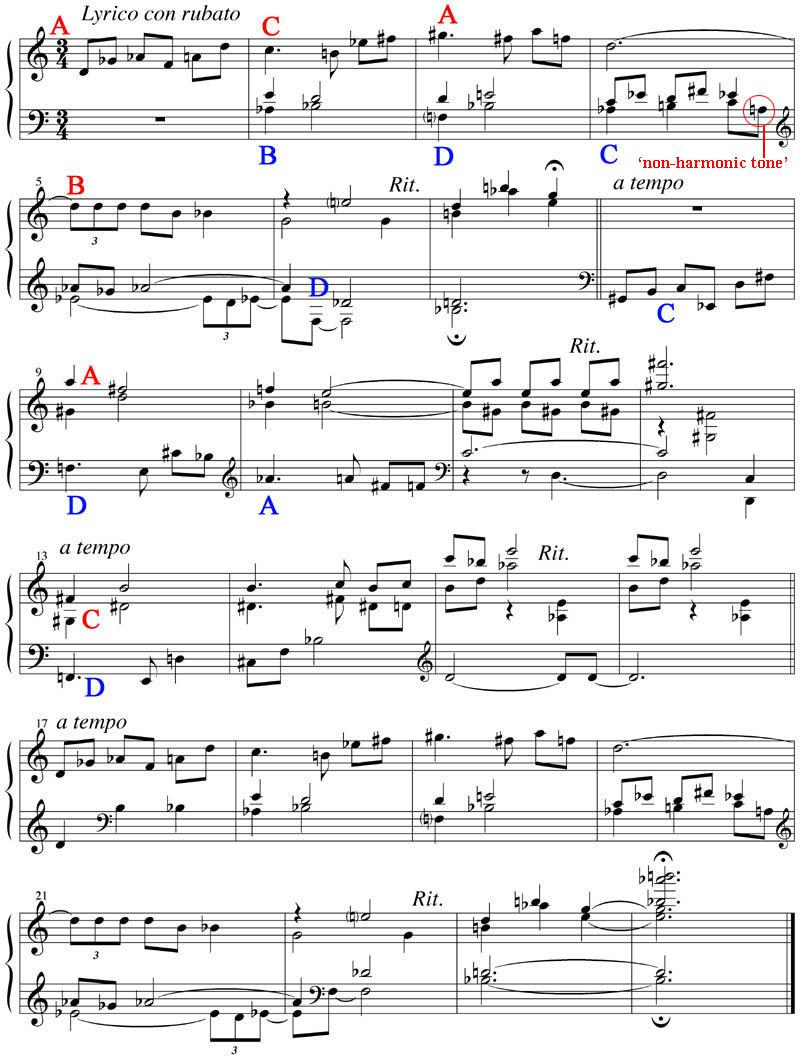
B. Rhythmic Ternary Piece using a Synthetic Scale
A Quasi-Tonal Scale. Since we are preparing to compose a work with more of a tonal character, we need to develop a scale that can support such an interpretation. In this piece we will use a nine note scale (in only one form – ascending) comprised of two conjoined five note patterns derived from an interval succession of a minor 2nd, major 2nd, minor 2nd, and minor 2nd (separated by a major 2nd).
Triads. Implementing a practice from tertian-based music, we will derive a harmonic vocabulary by creating triads using alternating notes from the scale (the numbers below represent the roots).
Seventh Chords. Using the same process as with the triads, we can derive tetrachords by adding the seventh note above each root. Note that the chords could be respelled diatonically, but this would not correspond with the theoretical premise as illustrated here. In the writing of our composition, however, there will be greater license in this area.
Transpositions. Here we have laid out a table displaying all of the transpositions of our synthetic scale. As with the lyrical piece, for the sake of comparison, we will limit use to only two transpositions separated by a tritone.



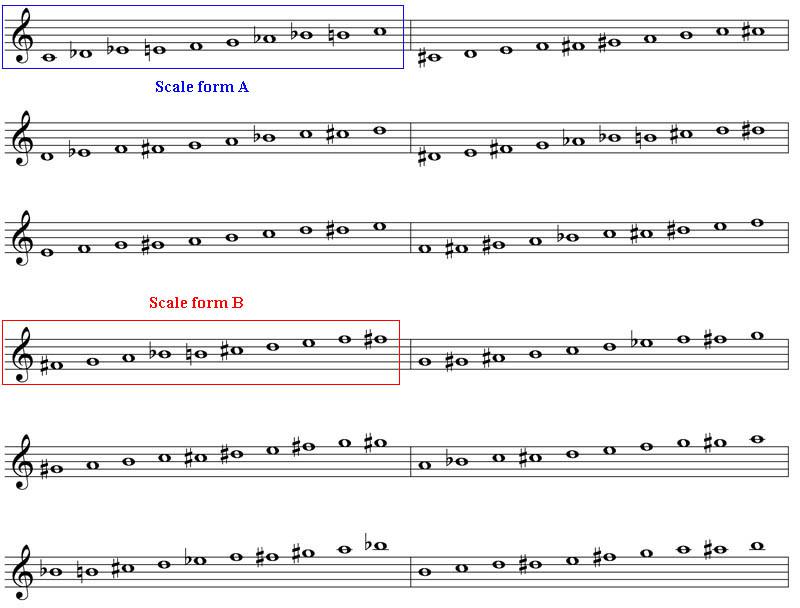
Writing the Piece. For the sake of analysis, many of the chords supporting the linear development in this piece are kept in a close voicing and in ‘root position’. Each sonority is labeled by number and color correlating to the root and scale from which it is derived. Without functional cadences, there exist no clear delineations of sections in this piece. However, a sense of tripartite form is attained through the use of different scale transpositions and a modified texture, both of which change in stages.
In bar 8 we notice the use of scale form B in the treble while the supporting voices remain in the original transposition. At this point, the linear material has become more florid and a new, distinct section is emerging. By bar 10 the accompanying chords are also derived from this transposed form of the scale, although there are some occurrences of the form A sonorities (functioning almost like secondary dominants in tonal music). In this second section, we also observe the use of non-harmonic tones. Similarly to their tonal counterparts, these pitches clearly stand out from their surrounding sonorities and create a need for ‘resolution’ to one of the scale steps.
At bar 18, we have returned to the material of the first section, both in terms of scale form, accompanying sonorities, and texture. However, the temperament of the more propulsive second section is maintained to some degree by a rhythmic elaboration in the bass voice. As well, the Common Practice method of using parallel thirds to intensify and amplify the character of a melody is applied here similarly to how we developed our harmonic vocabulary.
A simple coda is added in which the tempo gradually comes to a halt and the harmonic progression arrives at its only true cadential point in the piece.
Listen: Track 28
